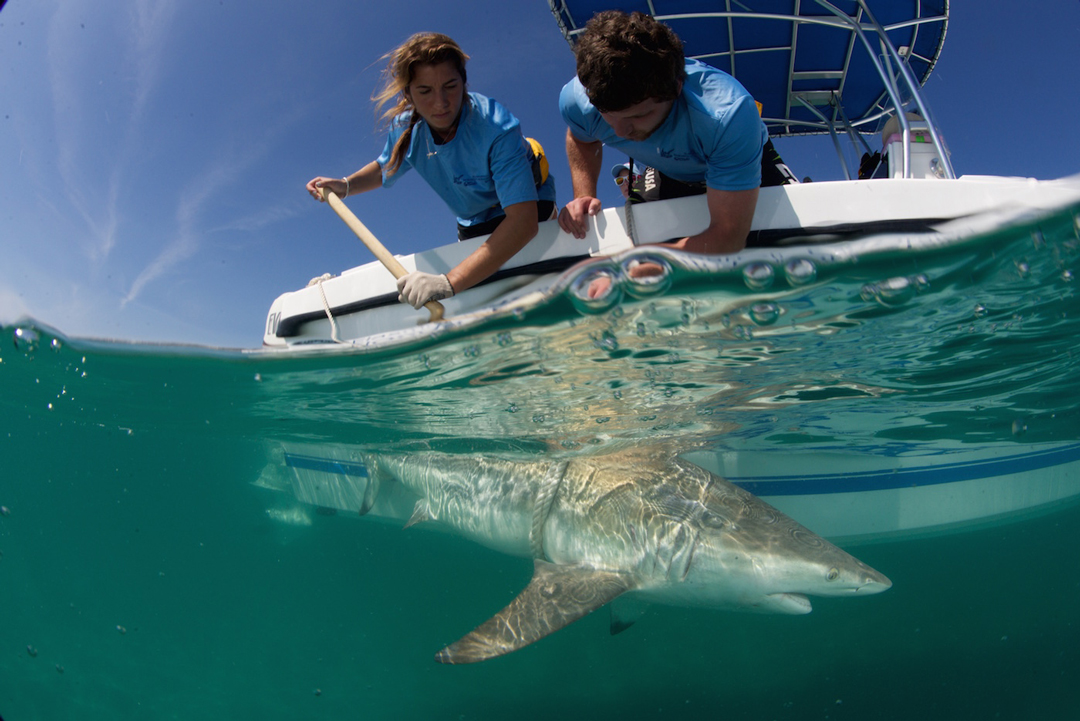Are we there yet? How about now?

Photo © Dr. Stephen Kajiura
It’s wintertime in south Florida, and we have a lot of winter visitors of the human variety. We also have thousands of shark visitors too. Every year, thousands of blacktip sharks (Carcharhinus limbatus) from the Western Atlantic migrate south to Palm Beach County. For the past 8 years, Dr. Stephen Kajiura has been flying aerial surveys along the coast to count the number of sharks just offshore. He flies about 200 meters from shore and about 200 meters high. This time of year, his surveys take place once a week because he expects the sharks to arrive in large numbers at any time to bring their winter aggregation.
Aerial survey video showing shark distributions as seen by a Cessna. As the video plays you can see more and more blacktip sharks in the water. They are found very close to shore. In the middle of the video you can see a person walking on the beach.
In the lab, the graduate and undergraduate students have been preparing the field gear for fishing ahead of the sharks’ arrival. The students have been testing satellite tags and fabricating the attachment hardware. These tag packages will tell us what the sharks are doing and where they are going while they aggregate. Winter in South Florida is surprisingly windy, so we have to wait for days when the weather is good to go out in the field. Once we are able to take the boat out, we can tag a shark, allow the tag package to collect data on the shark, and then retrieve the tag several days later after it has popped off.
We analyze our data to learn what the shark did over the days it was tagged and where it swam. Specifically, we can use the acceleration data obtained from the tag packages to estimate swimming speeds and tailbeat frequency (how many times the shark’s tail moves back and forth every second). Those two variables can tell us a lot about blacktip shark swimming, and enable us to make comparisons with other blacktips that we analyze from video obtained by aerial drone (look for our next blog), and with other species.
View from a drone. The crew is cruising along the shoreline and the blacktips are swimming ahead of the boat
These data are useful because they help us to understand the resources that the blacktips are using while they aggregate, which can improve conservation and management practices. The blacktip sharks may provide important services to the south Florida ecosystem while they visit. Any time thousands of predators come into an area, they will likely clean up their prey items. Imagine what your house would look like if you skipped spring-cleaning? Understanding the mechanics of the blacktip shark migration is central to understanding how they impact the local environments as they make their yearly trips.
